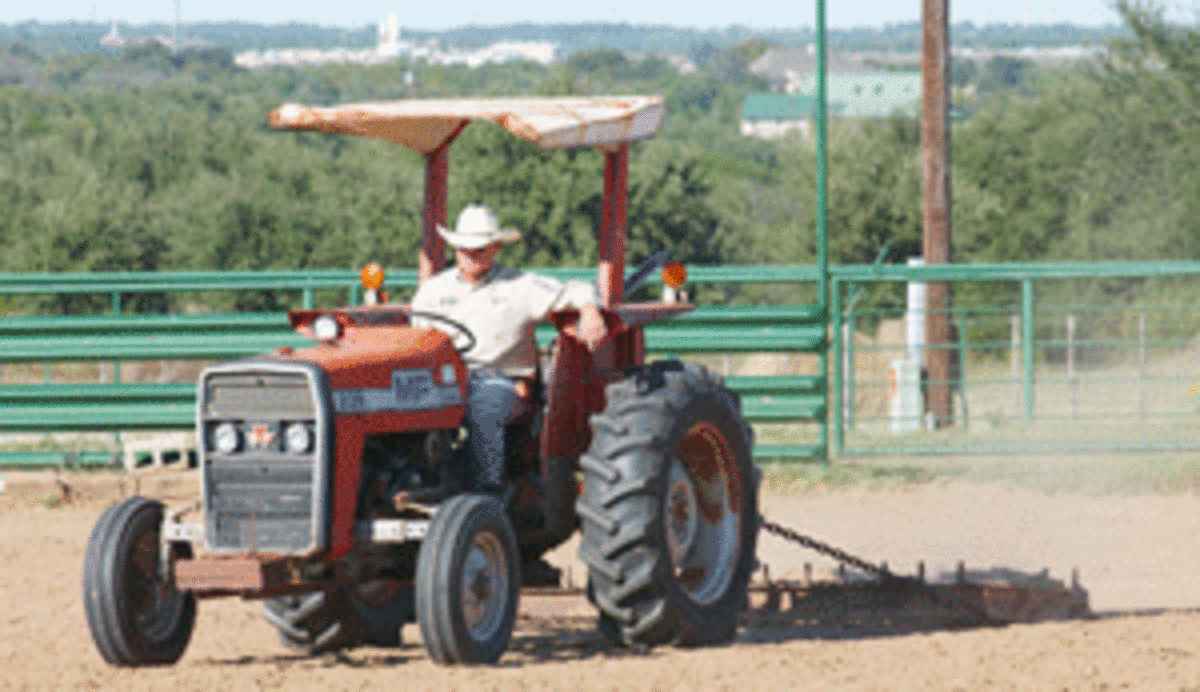Function and Fashion
Beyond the typical arena basics, it makes sense to factor in the 360-degree view from the place where you’ll be spending all those hours practicing. In 30 years and a gazillion different arenas, the prettiest pen NFR header Kevin Stewart has ever roped in was the Mytty arena, overlooking a gorgeous river in the foothills of the Bitterroot Mountains near Lolo, Mont.
As for function, Rachael Myllymaki laid her eyes on a humdinger just a few months ago. Here’s the NFR barrel racer and veteran team roper’s description of the most perfect arena she’s ever seen:
“It was built outside Fresno by a header named Bert McGill who designed it for team roping and possibly barrel racing jackpots. The place is also an equine swimming and recovery facility.
“His boxes and the end of his return alley are actually in a pen behind the arena, and he has a double set of gates to the left of the heading box into that pen, with another double set of gates at the back. You can lock both to create an alley right by the head box. It was the neatest idea, and safe. You can make a center alley out the very back or shut those back gates and make girls run into that pen. And none of it interferes with the boxes.
“The stripping chute had a right-hand approach, which I think keeps steers going straight rather than making that S-curve. And it was elevated so you didn’t have to lean down to take your rope off, which, for a short person, is really handy! Actually, even as a heavier person, you’re not leaning 200 pounds off to one side of that horse’s withers and giving him a chance to duck out from under you. A grate was used to create the rise, and it collected the mud, keeping the back pen cleaner.
“Finally, the return alley had gates that were C-shaped and could click shut or keep swinging, so that if you were bringing back a large bunch of steers, you could keep bringing that gate around behind them.
“And the best thing was that you could do it all horseback.”
Northwest Footings owner Chris Giannini built numerous arenas in California before moving his business to Idaho, where he also maintains the track at Boise’s Les Bois Horse Racing Park.
First off, Giannini says a dirt base can contribute a lot of dust to your arena, while a rock base won’t (his company offers a sealant to keep rocks from coming up through that kind of base). On top, his recommendation is for a sand/clay mix with a general split of 75/25 because it needs less water and won’t get too slick when it’s wet or too loose when it’s dry. His second preference is pure dirt, although it needs more harrowing and requires the perfect moisture level to prevent clods but maintain cushion.
“So many people put in arenas,” Giannini says, “and they don’t realize that if they don’t maintain the ground after they put it in, they’ve wasted their time and their money.”
Two words: harrow and water.
Giannini believes a good rule of thumb is to rake two and a half inches deep. Hard ground can cause unsoundness, but horses can pull tendons if it’s too deep. If it’s too dry and loose, too, shifting can injure soft tissues.
As for optimum water levels, that depends on everything from how often you harrow to whether the wind’s blowing. Smooth out your hoofprints, for instance, to keep from losing moisture. In this way, harrowing allows you to control the air, water and depth in your ground all at the same time.

Here’s his perspective on maintaining the two main ground types:Pure dirt
- For barrel racing, loosen it four inches deep for good traction, then come back to harrow it two and a half inches for cushion.
- Overwatering will make it slick.
- Remember that even if the top dries, there could be plenty of moisture left underneath.
- Pure clay
- Overwatering can make it slick
- The more clay you have, the finer the particles are and the more dust you’ll have. Pure sand
- Water will go a long way toward helping compact it.
- A courser granule means more space underneath and requires more water.
- Finer granules means less water is needed to bind it together. Softer sand breaks down faster (into dust).
- Finally, don’t forget to pull the built-up material away from the fences from time to time and level it regularly.
All About the Little Things
Before breaking ground on your new arena, you might consider:
- Consulting experts (Kiser Arena Specialists say 80 percent of all lameness injuries result from arenas with inept ground).
- Facing the action away from the barn to encourage your horses to rate.
- Equipping your gates with pins that drive into the ground to keep them open while you lead horses through.
- Heavily weighing your commitment to painting pipe. Elevating your stripping chute.
- Buying a portable arena if you’ll move soon or think it might positively affect your property’s resale value.
“Otherwise, you get shallower and deeper spots, which then take water differently and dry out differently,” he says. “You can feel a horse bog down in deeper spots, and with the cost of these horses today, it’s not worth it.”
Giannini advises getting yourself a harrow with wheels and some kind of gauge so you can dig at a consistent depth throughout.
“You can buy a chain harrow and drag it around, but that chain just follows the surface, so if it’s harder in one place it won’t dig in as much, and if it’s softer it will dig in more. Then it really gets uneven.”
For more information on Northwest Footing’s harrowing and watering equipment or dust control material, call 208-442-6554 or visit www.northwestfootings.com.










